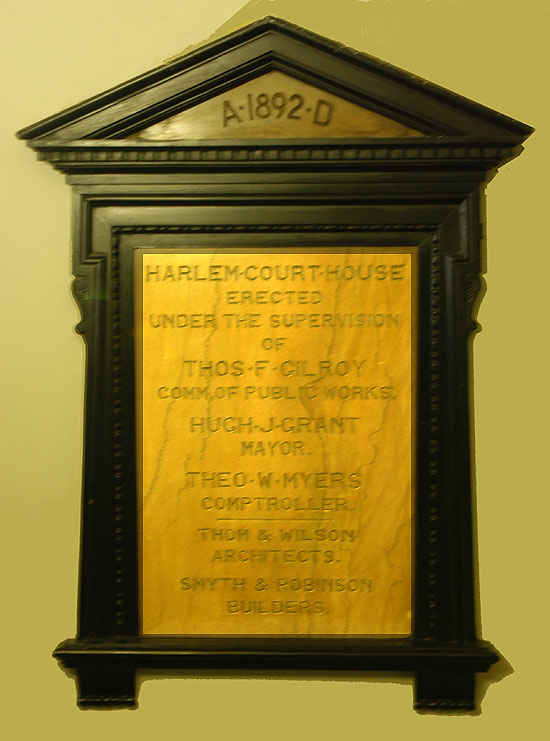 The plaque inside reads: A - 1892 - D Harlem - Court - House
Hugh - J - Grant
Theo - W. - Myers
Symth & Robinson Original digital image by Gerald Schultz. ________________________________________________________ HISTORICAL NOTES: A public works commissioner's name appearing higher than the mayor's on a dedication plaque? Perhaps the explanation can be found in the fact that Mayor Hugh John Grant, first elected to that office in 1888 and re-elected in 1890, did not run for re-election in 1892. Instead, his Tammany co-leader Thomas Francis Gilroy, the public works commissioner, ran for mayor and won. By the way, in 1894, former Mayor Grant (who also had been NY County sheriff) tried to regain his mayoral office but lost to fusion reform candidate William I. Strong. Mayor Strong is remembered for naming Teddy Roosevelt police commissioner and for presiding over the split-up of the Department of Public Charities and Correction into two separate municipal agencies.
The ex-jail and the former living quarters are not part of the restoration program. Those unrestored parts of the building are outside the mandate of those agencies. However, to their and their staffs' credit, they demonstrate commendable civic interest in providing what information and assistance they can to researchers studying the history of the ex-jail and former living quarters. |